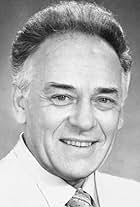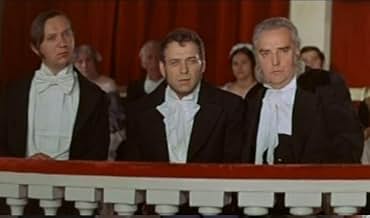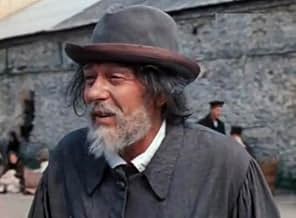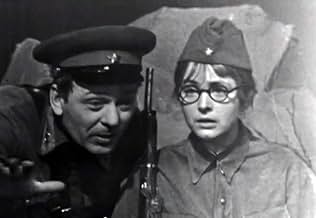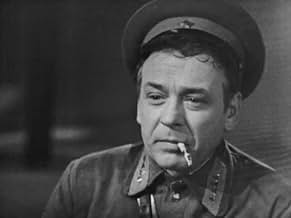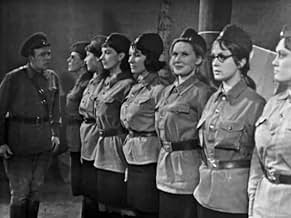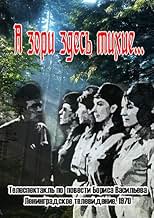Petr Shelokhonov(1929-1999)
- Actor
Petr (Peter) Shelokhonov was born in 1929, in Hajduki, Wilno Voivodeship, then part of
Poland (now Belarus). His ancestors came from Poland, from Lithuania, and from Ukraine.
Petr was destined to practice medicine, like his father, but his fate
was changed by war. He survived the German and Soviet invasion of Poland in 1939, when his birthplace was annexed by the Soviets and became a battleground that was scorched by German and Soviet armies in 1941-1944. The Nazis arrested Petr and he was severely wounded in his forehead but he escaped and survived. Then he joined the partisans resistance in the
woods.
There Petr Shelokhonov had his first acting experience. He was performing parodies of Hitler and the Nazis to his fellow partisans. His performances helped lift their spirits in a time when they were struggling to survive. This experience accentuated his humble, modest character. The scar on his forehead, the mark of war, made his acting career seem like an impossible dream; but Petr was determined. He made puppets and a screen, and worked in his own puppet theater from 1943 - 1945. In his show titled "Peter and the Wolf" he managed to lead four puppets with four voices, and also played the accordion. He performed for bread and rare food packages from the American airlift, and he was very lucky to survive until the end of WWII.
In 1945 he became a piano student at the Kiev Conservatory of Music, he also played the accordion on stage. Pyotr Ilyich Tchaikovsky and Sergei Rachmaninoff were his favorites as well as the music of Glenn Miller, Ella Fitzgerald, Frank Sinatra and other stars from the Voice of America radio shows. Eventually he became a stand-up comedian in Leningrad. There, in 1949, he was drafted in the Red Navy and served in the Baltic Fleet for five years under dictator Stalin. There he was arrested for telling a political joke and was detained in a strict guardhouse. After the death of Stalin, Shelokhonov was discharged from service. He managed to survive the roughest realities of life under Soviet dictatorship; but when his free spirited humor angered the hard liners again, many doors closed. After that, Petr's acting career was limited to Siberia. He moved to the Siberian city of Irkutsk and graduated from Irkutsk Drama School.
He became a member of the troupe at Irkutsk Drama Theater in the 1950s, then joined the Chekhov's Drama Theatre in the city of Taganrog in the 1960s, then, upon invitation from Lenfilm Studios, he returned to Leningrad in 1968. There, after a few successful appearances on television, he made his big screen debut as spy Sotnikov in "Hidden Enemy"/"No Amnesty" in which Petr Shelokhonov played a foreign spy wearing a Soviet uniform and killing people. When the movie was released in January 1969, a real Red Army officer wearing a uniform approached the Moscow Kremlin and made several gun shots trying to kill the Soviet leader Leonid Brezhnev. Immediately after this attack on the Soviet leader, the movie "Hidden Enemy"/"No Amnesty" was banned, all film copies were destroyed by the Soviet government, and Petr Shelokhonov together with the other filmmakers were censored. A replacement film Razvyazka (1970) was made under supervision from Soviet special agents who ordered that now the foreign spy in the movie must be dressed in a white shirt to be visible for moviegoers in the Soviet Union. Petr Shelokhonov played that foreign spy in a white shirt, albeit he survived again thanks to his talent, but Soviet censorship restricted him from leading roles. He spent most of his professional acting career working for film studios in St. Petersburg, Moscow, Kiev and Odessa.
Petr Shelokhonov played leading and supporting roles in Russian and international films, and his filmography includes over 80 roles in film and on television. His film and stage partners were such actors as Mikhail Boyarskiy, Kirill Lavrov, Ivan Krasko, Pavel Luspekayev, Efim Kopelian, Sergey Boyarskiy, Nikolay Boyarskiy, Natalya Fateeva, Andrey Myagkov, Sophie Marceau, Sean Bean, and other stars. He also played over 100 roles on stage in Russian and International theater productions. He played the leading role (Sam) in Photo Finish, written and directed by Peter Ustinov.
Petr Shelokhonov was designated Honorable Actor of Russia (1979). He passed away in 1999, and was laid to rest in St. Petersburg, Russia. Books about him were published in Russia and in the USA.
There Petr Shelokhonov had his first acting experience. He was performing parodies of Hitler and the Nazis to his fellow partisans. His performances helped lift their spirits in a time when they were struggling to survive. This experience accentuated his humble, modest character. The scar on his forehead, the mark of war, made his acting career seem like an impossible dream; but Petr was determined. He made puppets and a screen, and worked in his own puppet theater from 1943 - 1945. In his show titled "Peter and the Wolf" he managed to lead four puppets with four voices, and also played the accordion. He performed for bread and rare food packages from the American airlift, and he was very lucky to survive until the end of WWII.
In 1945 he became a piano student at the Kiev Conservatory of Music, he also played the accordion on stage. Pyotr Ilyich Tchaikovsky and Sergei Rachmaninoff were his favorites as well as the music of Glenn Miller, Ella Fitzgerald, Frank Sinatra and other stars from the Voice of America radio shows. Eventually he became a stand-up comedian in Leningrad. There, in 1949, he was drafted in the Red Navy and served in the Baltic Fleet for five years under dictator Stalin. There he was arrested for telling a political joke and was detained in a strict guardhouse. After the death of Stalin, Shelokhonov was discharged from service. He managed to survive the roughest realities of life under Soviet dictatorship; but when his free spirited humor angered the hard liners again, many doors closed. After that, Petr's acting career was limited to Siberia. He moved to the Siberian city of Irkutsk and graduated from Irkutsk Drama School.
He became a member of the troupe at Irkutsk Drama Theater in the 1950s, then joined the Chekhov's Drama Theatre in the city of Taganrog in the 1960s, then, upon invitation from Lenfilm Studios, he returned to Leningrad in 1968. There, after a few successful appearances on television, he made his big screen debut as spy Sotnikov in "Hidden Enemy"/"No Amnesty" in which Petr Shelokhonov played a foreign spy wearing a Soviet uniform and killing people. When the movie was released in January 1969, a real Red Army officer wearing a uniform approached the Moscow Kremlin and made several gun shots trying to kill the Soviet leader Leonid Brezhnev. Immediately after this attack on the Soviet leader, the movie "Hidden Enemy"/"No Amnesty" was banned, all film copies were destroyed by the Soviet government, and Petr Shelokhonov together with the other filmmakers were censored. A replacement film Razvyazka (1970) was made under supervision from Soviet special agents who ordered that now the foreign spy in the movie must be dressed in a white shirt to be visible for moviegoers in the Soviet Union. Petr Shelokhonov played that foreign spy in a white shirt, albeit he survived again thanks to his talent, but Soviet censorship restricted him from leading roles. He spent most of his professional acting career working for film studios in St. Petersburg, Moscow, Kiev and Odessa.
Petr Shelokhonov played leading and supporting roles in Russian and international films, and his filmography includes over 80 roles in film and on television. His film and stage partners were such actors as Mikhail Boyarskiy, Kirill Lavrov, Ivan Krasko, Pavel Luspekayev, Efim Kopelian, Sergey Boyarskiy, Nikolay Boyarskiy, Natalya Fateeva, Andrey Myagkov, Sophie Marceau, Sean Bean, and other stars. He also played over 100 roles on stage in Russian and International theater productions. He played the leading role (Sam) in Photo Finish, written and directed by Peter Ustinov.
Petr Shelokhonov was designated Honorable Actor of Russia (1979). He passed away in 1999, and was laid to rest in St. Petersburg, Russia. Books about him were published in Russia and in the USA.
